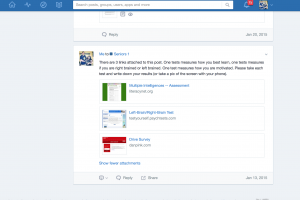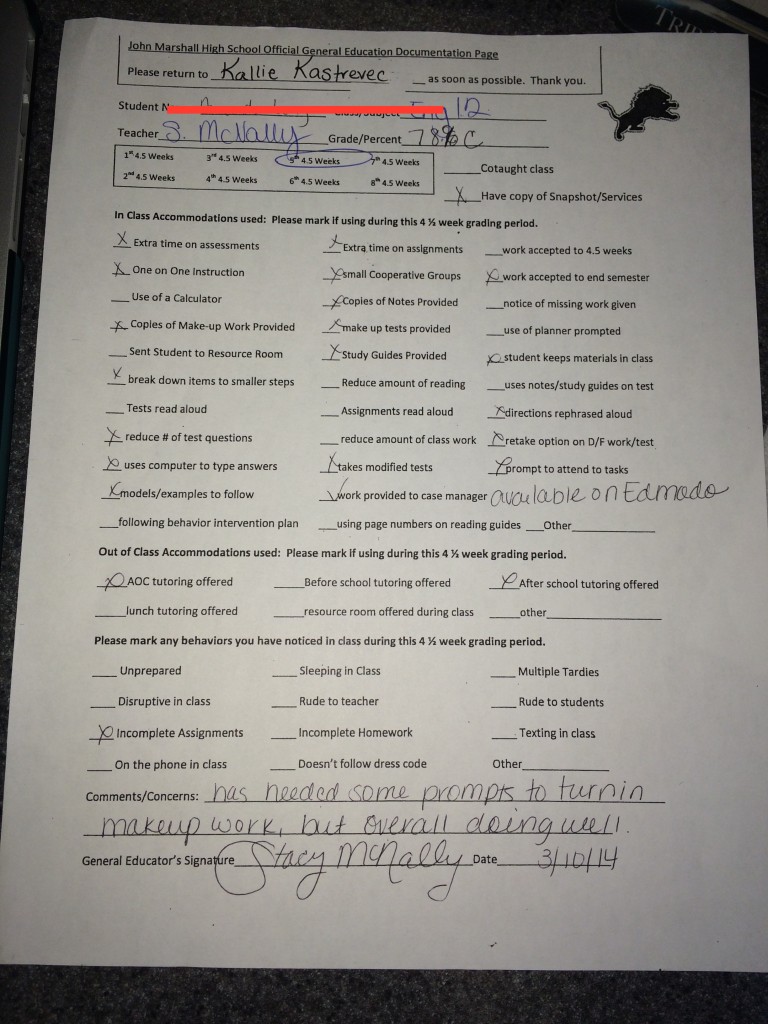Standard 4:
Instruction
Teachers plan and deliver effective instruction that advances the learning of each individual student.
I like to introduce a new idea or concept to students, and then have them apply the concepts learned in an activity to further enhance their knowledge and understanding. After teaching a Puritanical Sermon Sinners in the Hands of an Angry God, my students used the concepts of logos, ethos, and pathos, to illustrate the persuasive methods the pastor used in the sermon into what could be a modern day billboard. The students loved the idea to taking the overall message of the sermon and turning it into a different medium. They were discussing persuasive techniques, creating artwork, analyzing the literature, and having fun.
4.1 Teachers align their instructional goals and activities with school and district priorities and Ohio’s academic content standards.
As I have not been teaching in Ohio, I have not been aligning with Ohio’s academic content standards, but I can easily form my classes to those standards instead of West Virginia’s Next Gen Standards. Here is a lesson plan which shows that I connect my instructions to the academic standards.
Text Dependent Questions Lesson Plan
4.2 Teachers use information about students’ learning and performance to plan and deliver instruction that will close the achievement gap.
I use many forms of assessment to determine students’ learning and performance. I then use those assessments to deliver instruction which closes the achievement gap by meeting all student’s needs. I like to differentiate student work so each of my students will be challenged. I use scaffolding methods to ensure all students understand the materials.
These images show exit tickets that I have my students do with post-it notes. Students noted something they understood from the lesson and something they needed more help with.
4.3 Teachers communicate clear learning goals and explicitly link learning activities to those defined goals.
I like to clearly articulate the objectives to my students at the start of a lesson. I typically will write learning goals on the board along with a daily itinerary. If giving a presentation, I am also a fan of including the learning objectives in the start of the presentation so people can understand the scope of the presentation. Here is a Prezi I created for one of my graduate courses where I included the learning goals for participants.
4.4 Teachers apply knowledge of how students think and learn to instructional design and delivery.
I like to incorporate students’ multiple intelligences into the class. At the start of the year, students take a multiple intelligence test, a right brain vs. left brain test, and a motivation test. We then spend some class time discussing how they feel they best study or learn. I have them arrange themselves into groups based on their learning style, brain dominance, and motivation style. We call these our learning groups, our creative groups, and our working groups. Through the semester, I will have them do activities in these groups as opposed to picking people to work with. I can then give each group a project or activity based upon their learning style or interests. I have found that when we group this way, it is awesome to see the dynamics shift when they go from working with friends to working with people who may not be a friend but think similarly.
4.5 Teachers differentiate instruction to support the learning needs of all students, including students identified as gifted, students with disabilities and at-risk students.
This image shows documentation of modifications for a student with special needs I have in the general education setting. I go out of my way to meet the needs of each of my students.
4.6 Teachers create and select activities that are designed to help students develop as independent learners and complex problem-solvers.
To foster an appreciation for spoken word poetry at the end of a poetry unit, I created an experience style lesson. Students had to find a poem they loved outside of class. The poem should speak to them and illustrate something they have experienced or felt in their lifetime. Students had to analyze the poem and be able to discuss the literary devices used and explain how they impacted the meaning of the poem and enhanced the listening experience for the audience. Students entered the coffee shop complete with Mrs. McNally as a barista and hot chocolate, juice, and pastries for all. Each student read or recited their poem, discussed the impact it had on their life, and listened and appreciated their peers’ poems. As the students searched for their own poems they read hundreds of poems looking for the right one. As they broke apart and analyzed the poems they were problem solving and unlocking the mysteries the writers left for them to unravel. The students loved the activity and learned so much along the way. Even some other teachers came in and read their favorite poems and spoke about their significance.
4.7 Teachers use resources effectively, including technology, to enhance student learning.
After a persuasive unit, I had students create their own products they thought could benefit the world. Students then had to use iMovie to create their own commercials to sell their products and include logos, ethos, and pathos.





